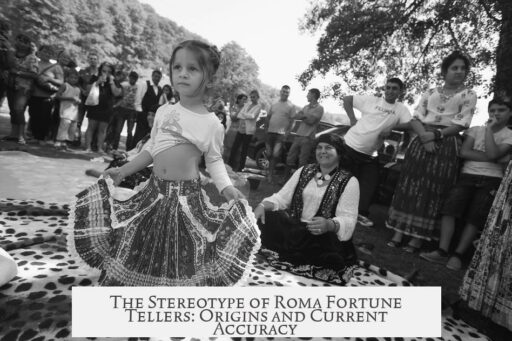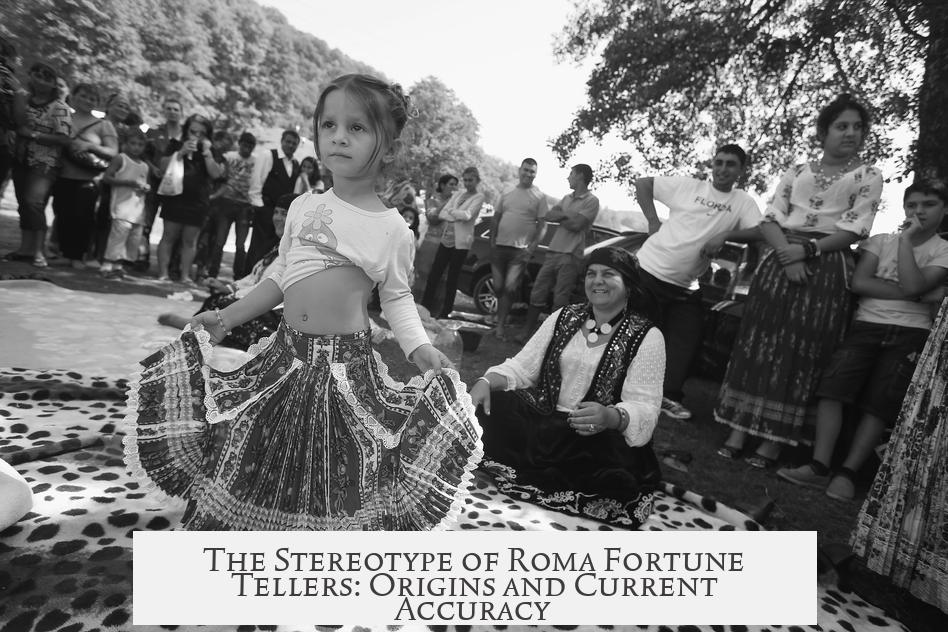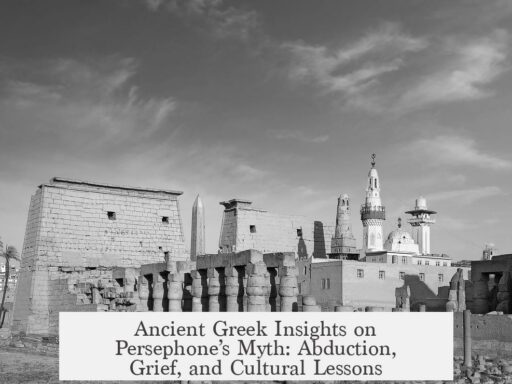The stereotype of Roma people as fortune tellers and card readers emerges from a combination of traditional practices and external misconceptions. It has historical roots but is often exaggerated and inaccurate.
Fortune telling has long been a traditional occupation for Romani women. It served as an economic activity that helped families survive, especially while on the move. Common divination methods include reading tea leaves, coffee grounds, and palmistry. These practices hold cultural and sometimes spiritual significance within Roma communities. However, the widespread image of crystal balls and Tarot cards linked inevitably to Roma is only partly accurate.
Tarot cards, for example, are not originally Romani. Most common Tarot decks date back to 15th-century Italy, well before the Romani diaspora. Some Romani families embrace Tarot as part of their spiritual tradition, while others reject it as a non-Romani practice. This shows the diversity within Roma culture regarding cartomancy. Crystal balls, on the other hand, have no real connection to Romani heritage. Their association likely stems from 19th- and 20th-century Spiritualism and was later appended to the Romani fortune teller stereotype.
Economic and social factors explain why fortune telling became visible to non-Roma. It was a portable skill that allowed women to earn income through intimate client interactions. Alexandra Oprea, a Romanian Roma law student, compares these exchanges to therapeutic sessions where clients discuss problems and receive emotional support, highlighting a nuanced view beyond mere superstition.
This stereotype also results from widespread discrimination and othering. Roma have faced prejudice and persecution throughout history. Portraying them as mystical fortune tellers facilitated harmful stigmas, linking them unjustly to witchcraft. These false images traveled with the Roma diaspora to Europe and the Americas, reinforcing marginalization and stereotyping.
| Aspect | Reality |
|---|---|
| Traditional fortune telling | Tea leaf reading, coffee grounds, palmistry |
| Tarot cards | Adopted by some, origins outside Roma culture |
| Crystal balls | Not linked historically to Roma |
| Economic role | Portable skill for Romani women to support families |
| Discrimination | Stereotype used to marginalize Roma |
- Traditional fortune telling by Roma involves tea leaves, coffee grounds, and palmistry, not crystal balls.
- Tarot cards are used by some Roma but are not originally Romani.
- The crystal ball stereotype comes from broader Western spiritual movements, not Romani culture.
- Fortune telling served as a socio-economic tool for Roma women historically.
- The stereotype contributes to Roma marginalization and reflects long-standing prejudice.
In the Media, the Roma Are Always Fortune Tellers: How Did This Stereotype Develop? And How Accurate Is It?
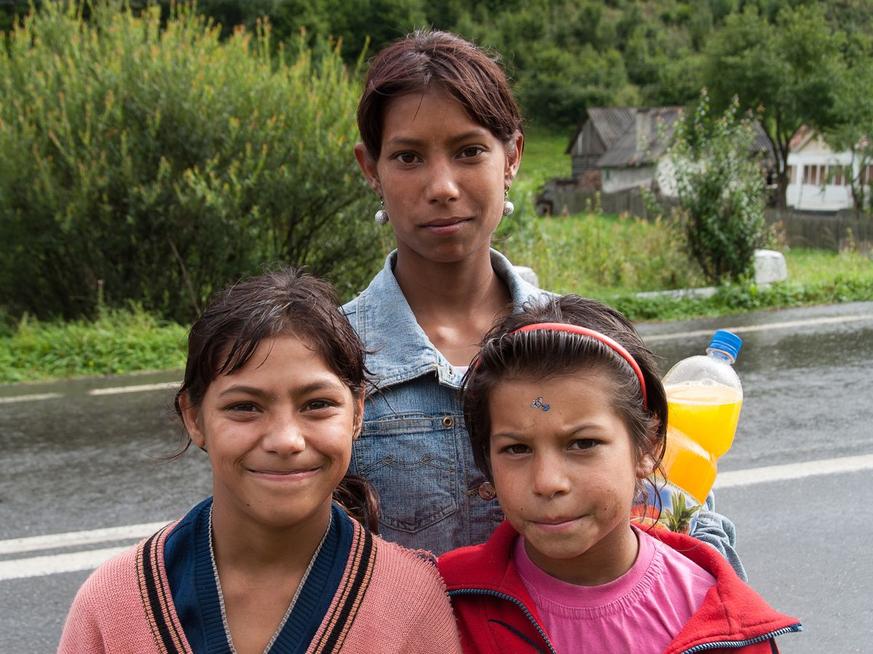
At first glance, the image of Romani women peering into crystal balls and reading tarot cards seems like a staple of popular culture. But where does this idea come from, and how close is it to reality? The truth is both richer and more complex than the clichés tossed around in films, books, and TV shows.
The belief that all Roma are fortune tellers is an over-simplification rooted in a mix of tradition, history, and prejudice.
Let’s untangle this tangled web of stereotypes and facts.
A Glimpse into Traditional Romani Fortune Telling
Romani fortune telling isn’t a Hollywood fantasy drawn from thin air. In some Romani communities, particularly among women, fortune telling was a traditional way to earn money and support families on the move. But the picture isn’t what many imagine.
Popular media often shows flashy crystal balls, mysterious curses, and Tarot cards galore. That’s mostly fiction.
Instead, traditional Romani fortune telling tends to involve subtle, everyday techniques like reading tea leaves or coffee grounds, and palm reading. These practices are deeply rooted in Romani spiritual traditions and family customs.
In fact, many contemporary Roma maintain these intimate rituals. For instance, if you chatted with Roma families you might hear about the art of interpreting the shapes at the bottom of a coffee cup.
Why Fortune Telling Became Linked to Roma Women
Fortune telling was often a practical occupation for Romani women. It offered a flexible way to earn income during travels or in the face of economic hardship.
This role had social functions too. Alexandra Oprea, a Romanian Roma law student and activist, observes that these fortune telling sessions function like a form of therapy.
“Clients share personal problems, and the fortune teller offers validation and hope,” Oprea explains.
Romani fortune telling isn’t just about predicting the future. It’s a moment of connection, a social ritual with meaning beyond mere money-making.
The Tarot Card Factor: Not All That Romani
One key element frequently associated with “gypsy fortune telling” is Tarot cards. However, Tarot doesn’t actually have Romani origins.
Tarot cards have a rich history predating the Romani diaspora, with many forms emerging in 15th-century Italy.
Interestingly, some Romani groups adopted Tarot into their spiritual practices. Some families incorporate it deeply, while others distance themselves from it, seeing Tarot as a non-Romani invention.
This shows how culture is never static—it’s shaped by contact and choice. It also highlights how media portrayals don’t capture the nuanced reality.
Crystal Balls: The Curious Case of a Non-Romani Symbol
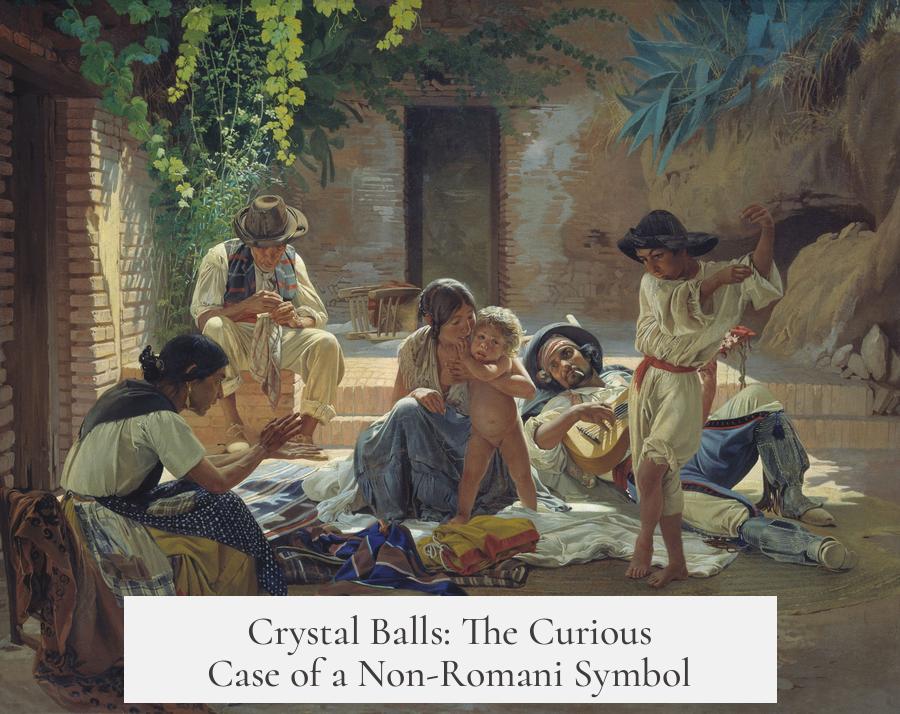
If crystal balls aren’t Romani, why do we all picture a Romani woman staring into one?
This image likely emerged during the Spiritualism movement of the late 19th and early 20th centuries, when crystal balls became popular as a mystical tool. Over time, this imagery fused with the general “fortune teller” stereotype and then attached itself unfairly to Roma women.
There’s no intrinsic link between Romani culture and crystal balls, just unfortunate layering of stereotypes.
The Dark Side: Discrimination and Othering
Here’s where things take a serious turn. Roma people have faced centuries of intense discrimination across Europe. They were often marginalized, imprisoned, expelled, and even enslaved.
Fortune telling became a “bridge” for the dominant society to view Roma as both exotic and suspicious—a witch-like archetype connected to fear and superstition.
While Romani spirituality overlaps and blends with major religions (notably, Sara e Kali, a Romani patron saint, blends Hindu and Catholic traditions), Roma communities have persistently been cast as the “Other.”
This “othering” solidified harmful stereotypes like the fortune teller myth, which distracted from the real richness of Romani culture and the injustices Roma face.
How Accurate Is the Stereotype Today?
The stereotype of all Roma being fortune tellers with crystal balls and tarot cards is inaccurate.
Some Romani women still practice traditional fortune telling involving tea leaves and palm reading, rooted in genuine spiritual practices.
However, the glittery, mystical versions seen in movies are mostly literary fabrications, compounded by outsider misunderstandings and racist prejudices.
Roma are a diverse, vibrant people with rich cultures, languages, and histories—not just one-dimensional figures in a fantasy role.
What Can We Learn from This?
Next time you see a “gypsy fortune teller” on screen, consider the story behind the stereotype. Recognize it as a blend of some truth, much fiction, and a troubling history of discrimination.
It’s a chance to ask: How do stereotypes shape our understanding? What stories aren’t being told? How might perceptions change if we focus on the complexity behind the image?
More respect and curiosity toward Roma culture helps dismantle old biases. It also honors the resilience and traditions they continue to uphold.
In the end, the fortune teller trope is just one thin thread in a rich cultural tapestry that deserves to be seen fully and fairly.
So next time someone asks about Roma and fortune telling, you have the nuanced truth ready—because real understanding beats a stereotype any day.
Why are Roma people often shown as fortune tellers in media?
Fortune telling was a traditional trade for some Romani women. It helped them earn money while moving from place to place. This exposure made the association common in non-Roma eyes.
Are crystal balls originally part of Romani fortune telling?
No, crystal balls are not a Romani tradition. The tool grew popular during the 19th-century Spiritualism movement and was later linked to Romani fortune tellers in stereotypes.
Is Tarot reading an authentic Romani practice?
Tarot cards were adopted by some Roma communities, though the cards themselves predate Romani culture. Some Roma embrace Tarot; others reject it as external to their traditions.
What traditional methods do Roma use in fortune telling?
Romani fortune telling often includes reading tea leaves, coffee grounds, and palm reading. These practices come from family and spiritual traditions passed down through generations.
How did the fortune teller stereotype affect Roma society?
This stereotype helped link Roma to negative traits like witchcraft. It increased discrimination, leading to imprisonment, expulsion, and slavery in some regions.
Does Romani fortune telling offer any deeper social or cultural role?
Yes, fortune telling can be like therapy. It allows Roma fortune tellers to listen deeply and offer guidance, validating clients’ feelings beyond just predicting futures.
